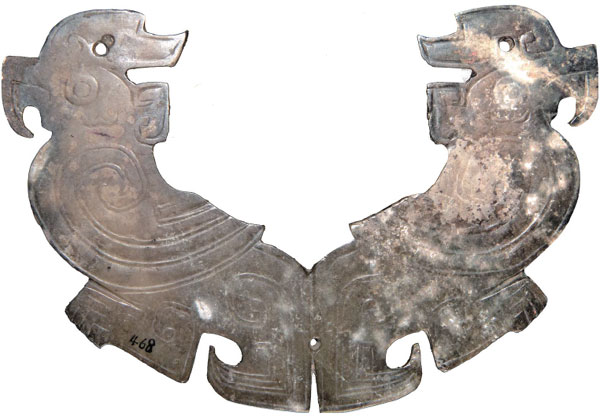Bronze Age queen and warrior
Fu Hao, a female legend from three millennia ago, was reintroduced to the public at an exhibition in Beijing. On display are 441 cultural relics, ranging from bronze ware and jade objects to oracle bones used to tell the future
She was a warrior. She was a queen.
If the Shang Dynasty (c. 16th-11th century BC) was the zenith of the Bronze Age in China, she was probably its most interesting ruler.

Fu Hao (Hao is the surname and Fu means a woman in Chinese), an important figure from 3,000-odd years ago, is the subject of an exhibition at Beijing's Capital Museum.
Queen, Mother, General: 40th Anniversary of Excavating the Shang Tomb of Fu Hao includes 441 cultural relics that help introduce viewers to the world of this remarkable woman.
Since the 1976 discovery of Fu Hao's tomb in Anyang, Henan province, the site has been one of the longest continuously studied sites in China. It is also the only intact family tomb found of the Shang rulers, and 1,928 funerary objects have been unearthed. It is considered a milestone in the country's archaeological history.
Black and red were the colors most dear to rulers in the Shang Dynasty, and they set the tone for the museum journey back in time. Cloth curtains and drapery give the display a certain feminine charm.
"The relics have to be displayed in a certain atmosphere to reflect their values and better tell the story," says Li Dandan, artistic designer of the exhibition.
"Visitors have no idea what Fu Hao looked like, but we can usher them into her world with a gentle approach," she says.
Nevertheless, the evidence shows that Fu Hao was not a common queen who hid behind a veil. As one of the wives of Wu Ding, a king of the Shang dynasty whose reign lasted 58 years, and she is known to historians as a female general who assisted her husband.
According to Feng Hao, a history researcher at the Capital Museum and curator of the exhibition, she led at least four major wars against surrounding tribes. She mobilized as many as 13,000 soldiers for a military expedition, an extraordinary achievement in her time.
"This reflects her charisma and power," says Feng. "Though we also found tombs of Wu Ding's other wives, Fu Hao's tomb is closest to the palace relics, which reveal her status in the king's heart."
A replica of the tomb has been created in the exhibition hall, and virtual-reality glasses provide an opportunity for visitors to see facades of the Shang palaces, which were created by archaeologists based on their studies.
"Intermittent wars were a common thing during the Shang Dynasty. So you cannot blame Fu Hao for her brutality, because that was the way it was in that time," he adds.
A bronze yue battle axe is among the exhibits, which shows her status as a top military commander.
However, a delicate bone hairpin shows a gentler side of this battlefield heroine. Exhibits like a jade dragon and jade parrots with connected tails also remind people of her pursuit of aesthetics.
Several jade figurines on display show the general appearance of the Shang people.
A bronze owl-shaped zun wine vessel with complex ornamentation not only epitomizes flamboyance, but also reminds people of animated animals today.
Some unearthed articles are from earlier periods of history - like the late Neolithic period, ending about 3500 BC - and Feng says they reflect her wealth and fine taste.
Recent finds are also included in the exhibition. For example, after Fu Hao's death, she was betrothed by Wu Ding to his late father. Though it may sound strange today, Feng says that it reflects the king's homage to his ancestors and his love for his wife.
"He wanted Fu Hao to be blessed by the ancestors. In the early part of Chinese civilization, a necromantic culture played an important role."
There are other unresolved mysteries about her. Fu Hao is generally believed to have died before turning 50, and some scholars speculate she could have died in her 30s. But no conclusive proof is available.
The exhibition is a part of the Capital Museum's series of special events marking its 35th anniversary.
According to Bai Jie, the head of the museum, relics from the Fu Hao tomb are scattered among different institutions nationwide, but are mainly in the custody of the Chinese Academy of Social Sciences and the Henan Museum.
"So it is both rare and fortunate to have them juxtaposed in one museum (for the exhibition)," he says.
wangkaihao@chinadaily.com.cn


















